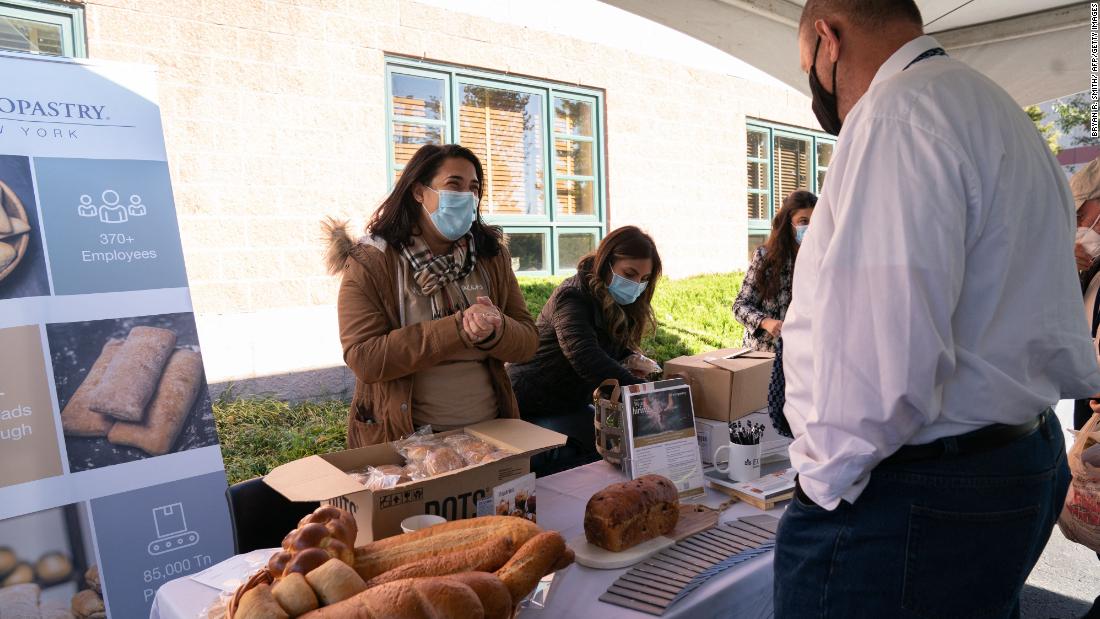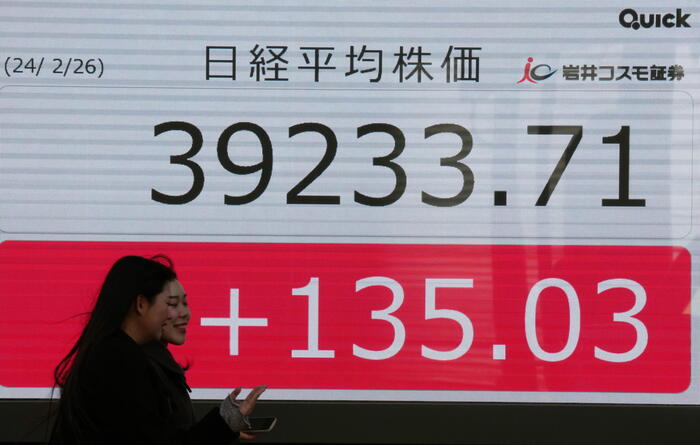4.4 million people quit their jobs in February 1:41
New York (CNN Business) --
The American job market has come a long way since the worst days of the pandemic, when more than 20 million Americans lost their jobs.
Now the recovery enters a new phase, which will probably be slower.
For Friday's March jobs report, economists surveyed by Refinitiv expect 490,000 jobs to have been added.
If the prediction turns out to be correct, the country will have recovered more than 90% of the jobs lost during the pandemic.
It would also put the unemployment rate at 3.7%, a new low in the pandemic era.
US employers added 455,000 private sector jobs in March, slightly above forecasts
Monthly job gains have averaged more than half a million in the last 12 months, a truly staggering pace compared to pre-pandemic figures.
In 2019, for example, the monthly average was just 164,000 jobs.
On the one hand, this shows how well the recovery is going.
On the other, it serves as a reminder that a slowdown will have to come eventually when the economy returns to normal.
"I do expect the pace of hiring to slow down, but I think it's important to say it's due to supply constraints," said Simona Mocuta, chief economist at State Street Global Advisors.
Weekly claims for jobless benefits have also returned to a more normal level: Last week, 202,000 workers applied for initial jobless benefits, adjusted for seasonal variations.
This figure is slightly higher than forecast by economists, but in line with pre-pandemic levels.
advertising
Meanwhile, the number of Americans who applied for benefits for at least two weeks in a row fell to 1.3 million in the week ending March 19, seasonally adjusted, the lowest level since December 1969.
The labor shortage that has characterized much of the recovery has not been resolved.
Between high demand from companies and fewer people in the workforce, competition for talent is fierce.
The "Great Resignation" continues: 4.4 million Americans left their jobs last month
In February, the country had 11.3 million vacancies to fill, but had only hired 6.7 million people.
Economists believe that it will take time for this mismatch between labor demand and supply to diminish.
Meanwhile, wages are rising as companies compete to attract and hire staff.
In terms of economic data, this means that some indicators that were closely watched during the first phase of the recovery will take a backseat.
"I'm almost at a point where I think the employment numbers themselves become secondary," Mocuta said.
Instead, data on labor force participation and wages will be much more relevant.
"For me it's about the supply of labor and its price. I know what the demand for labor is," Mocuta added.
In February, the labor force participation rate stood at 62.3%, still below the pre-pandemic level of 63.4%.
This means that there are still workers who left the workforce during the pandemic.
The reasons for doing so were childcare, concerns about contracting the coronavirus and early retirements among older workers.
ANALYSIS |
Prices continue to rise and CEOs win
Wages, meanwhile, rose little in February but were up more than 5% in the previous 12 months.
But the increase in wages has not coincided with the price increases registered by the main measures of inflation.
The latest consumer price index shows that inflation rose last month at a rate not seen in 40 years.
Mocuta expects wage inflation to moderate this year, though it is hard to see how else the imbalance between labor supply and demand can be addressed.
"A good reason to get out of the doldrums and get back to work is rising prices, and not just at grocery stores and gas stations," said Jennifer Lee, chief economist at BMO.
The bottom line is that companies are passing on their higher employment costs to consumers as well, but there is a limit to what people will be willing and able to absorb.
"It is not at all easy to determine when tipping points occur. You can only really know in hindsight," Mocuta said.
But he believes that the conditions are ready for it.
Jobs in the United States








/cloudfront-eu-central-1.images.arcpublishing.com/prisa/KMEYMJKESBAZBE4MRBAM4TGHIQ.jpg)


